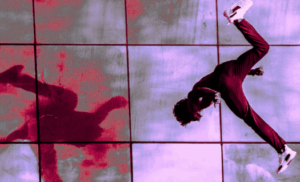Some say that the ultimate aspiration of a brand is to get its fans to tattoo its logo. Many Harley-Davidson customers fall into this category. Some from Apple, too. This is a rare occurrence and represents the utmost adherence not only to the products, but to the spirit of the company. Sometimes, however, the opposite is true. Some firms fight tooth and nail to prevent certain customers from using their products. Brand pride is one thing, user pride is another.
Take Fred Perry and his confrontation with the Proud Boys, a group of the so-called “alt-right” in the US that is pro-President Donald Trump and associated with violent activities and demonstrations, as well as white supremacist milieu.
The differences between the British Fred Perry and the Proud Boys go back a long way, but it is now that they have reached an unusual point that will affect the marketing of the brand’s products in North America.
The Proud Boys, led by Gavin McInnes, then founder of the Vice Media group, appeared on the map in 2016, with Trump’s candidacy for the presidency of the country. Like other popular right-wing extremist organisations, they stood up for Western values (whatever they might be) and for the white population that was supposedly being victimised by the defence of racial minorities. His long list of demerits includes demonstrations, provocations and violent riots across the United States in recent years. They are not friends, or even close friends, of the defenders of LGTBI rights or of the Black Lives Matters movement.
So what does Fred Perry have to do with Proud Boys?
Clothing. From the very beginning, these merry boys adopted the brand’s iconic black polo shirt with a double yellow stripe on the collar and sleeves as their unofficial uniform. Many of its followers wear it as a distinctive sign, which led the company, in 2017, to speak out for the first time against its use associated with this group’s values. The news comes in the form of a statement issued by Fred Perry on 24 September.
Noting that the values represented by the laurel brand are “inclusivity, diversity and independence“, the company announced that its decision to stop selling this product in 2019 in the United States until it fully disassociated itself from Proud Boys will be extended to Canada. Its president, John Flynn, made this clear in a 2017 interview: “No, we do not support the ideals of the group you are talking about. It’s against our beliefs and the people we work with”.
Fashion and values
This is not the first time this has happened to Fred Perry. In the 1960s the brand was an aesthetic hallmark of the mods. In the following decades it was a radical urban tribe like the skinheads. On that journey, other items of clothing became unwitting symbols of certain ideologies. The iconic Dr. Martens boots, with their characteristic metal-reinforced toe caps, became an aesthetic reference point for punk and a weapon for street fights, while Lonsdale products were first favoured by neo-Nazis (because the letters NSDA resembled the name of Hitler’s party, NSDAP) and later by non-racist skinheads.
It is not easy to be an icon for someone who does not represent you but has the same right as anyone else to buy your products. Sometimes the conflicts are not ideological, but aesthetic. Over the last two decades, some luxury and high fashion brands have tried to avoid associating their brands with people who did not correspond to the image they wished to project.
It is not the same for an anonymous person to wear their clothes as it is for an undesirable celebrity who will be photographed by dozens of cameras at a mass event. In Spain, this aesthetic rejection hovered over Belén Esteban’s wedding to Fran Álvarez in 2008. Then, up to three brands refused to sew her wedding dress.
I am aware that large luxury brands have even rejected product requests from bloggers and influencers because their appearance or the image of their digital profiles did not match the appearance they wanted to sell to the outside world.
Some luxury and high fashion brands have tried to avoid association with people who did not fit the image they wished to project.
The user builds the brand
However, it is very difficult to avoid that the customer who is forced to wear the logo or imago because it is sewn or printed on the product cannot be a brand ambassador in spite of himself. As Rodrigo Rato would say, “that’s the market, folks“. When we buy a shirt, a pair of sneakers or a dress, we do not sign a contract accepting certain rights of use, nor is there a segregation between who can and who cannot buy.
Often, this discrepancy between those who make and those who buy only demonstrates the evolution of the market and the liquid nature of consumers. For Gucci, Chanel or Versace, their audience has long since ceased to be only high society. It is to be found in poor neighbourhoods, where certain cultural movements have turned symbols of luxury into emblems of excess, signs of power and even parodies of the class struggle.
The world of trap music is an example. The aesthetics of some of the footballers, who have become icons of tacky luxury, are proof of this reorientation of the market. But there´s more.
Trends such as the hypebeast, which collectors of the most expensive streetwear garments on the market adhere to, have turned the sock of exclusivity upside down. They do not feel that brands are an evocation of a high-end world, but see them as collector’s items with which to differentiate themselves in an urban environment.
Wearing a pair of 700-euro Balenciaga trainers is not about approaching the world of glamour, but about differentiating oneself in a hostile environment with a gesture of economic authority. There are no great values or principles here, but a certain playfulness. In fact, companies like Supreme seem to have been created especially for such audiences, rather than the other way around.
Brand principles, values and purpose
Faced with customers who are at odds with the brand’s principles, what can be done? If we are talking about aesthetics, the best recommendation is to adapt to the opportunity. If we talk about ideology, we are touching on the values of an organisation, and that is already very different because it should affect all the decisions of the company.
This summer, Lacasa became embroiled in controversy. Should the image and name of Conguitos be altered because of its representation of the black community in times of the Black Lives Matter movement or should it stay away from this kind of controversy, which is alien to the intention of the product? Some of the leaders of the political party Vox took the opportunity to take pictures of themselves eating Conguitos. Would such a direct value association have merited a direct brand response?
Never have companies been more credible advocates of causes than public institutions.
Fred Perry has drawn a red line unlike any seen before. Nike already paved the way in 2018 by making Colin Kaepernick the face of a campaign heavily criticised by Donald Trump supporters. Faced with the reaction of those burning Nike shoes, the company reacted by giving instructions to do it right. Not only did the market not penalise Nike’s sales, but its shares ended up soaring on the stock market. We live in a different era.
It is the era of corporate purpose. No products or services are sold. Values are sold. Positioning around them will condition commercial activity, but it will also give stability to the company and make its decisions logical and coherent. Never before have companies been able to champion causes with more credibility than public institutions. Profiling is not what customers expect. Neither do employees.










